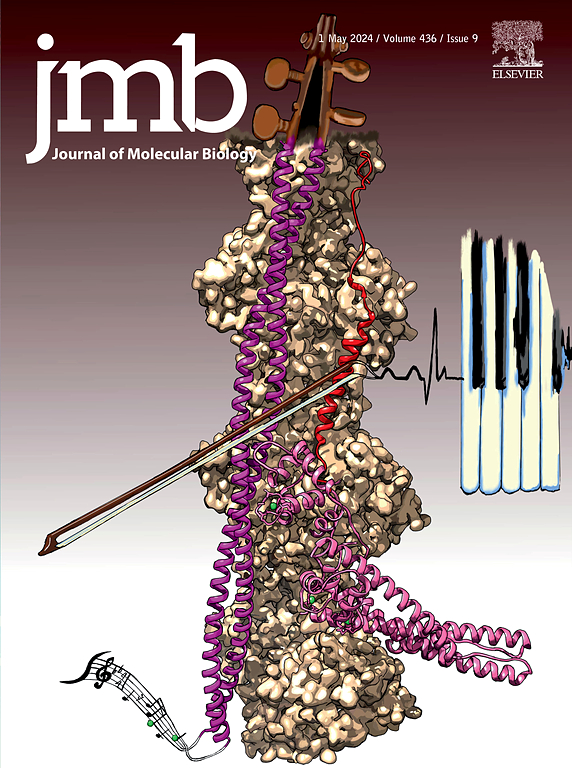Nucleocytoplasmic HDAC Inhibition Drives Acetylation-dependent TDP-43 Mislocalization and Disulfide-linked Oligomerization
IF 4.7
2区 生物学
Q1 BIOCHEMISTRY & MOLECULAR BIOLOGY
引用次数: 0
Abstract
TDP-43 proteinopathies, including amyotrophic lateral sclerosis (ALS) and frontotemporal lobar degeneration (FTLD), are characterized by aberrant cytoplasmic mislocalization and aggregation of TDP-43. Here, we established a live-cell TDP43-BiFC model to visualize TDP-43 oligomerization in real time and screened diverse cellular stressors. Histone deacetylase (HDAC) inhibition emerged as the most potent trigger of TDP-43 oligomerization. In particular, selective inhibition of the shuttling HDAC4/5 with LMK-235 induced an early and robust formation of cytoplasmic TDP-43 oligomers, comparable to or even exceeding the effect of the pan-HDAC inhibitor apicidin. In contrast, nuclear-restricted HDAC1/3 inhibition by MS-275 prolonged TDP-43 retention in the nucleus with minimal cytoplasmic mislocalization or oligomerization, underscoring distinct roles for nuclear versus nucleocytoplasmic HDACs. Inhibition of cytoplasmic HDAC6 (tubastatin A) had no significant effect. Notably, both shuttling and pan-HDAC inhibition increased TDP-43 acetylation and promoted the accumulation of stable, disulfide-linked TDP-43 oligomers. These findings identify lysine acetylation as a key regulator of disulfide bond-dependent TDP-43 oligomerization and suggest that targeting nucleocytoplasmic HDACs could be a novel therapeutic strategy in TDP-43 proteinopathies.

核细胞质HDAC抑制驱动乙酰化依赖的TDP-43错定位和二硫连接的寡聚化。
TDP-43蛋白病变,包括肌萎缩性侧索硬化症(ALS)和额颞叶变性(FTLD),其特征是异常的细胞质错误定位和TDP-43聚集。在这里,我们建立了一个活细胞TDP43-BiFC模型,实时可视化TDP-43寡聚,并筛选了不同的细胞应激源。组蛋白去乙酰化酶(HDAC)抑制是TDP-43寡聚化最有效的触发因素。特别是,用LMK-235选择性抑制穿梭的HDAC4/5诱导细胞质TDP-43寡聚物的早期和强劲形成,可媲美甚至超过泛hdac抑制剂apicidin的作用。相反,MS-275对细胞核限制性HDAC1/3的抑制延长了TDP-43在细胞核中的滞留时间,而细胞质错定位或寡聚化程度最低,强调了细胞核与核胞质hdac的不同作用。抑制胞质HDAC6 (tubastatin A)无显著作用。值得注意的是,穿梭和泛hdac抑制都增加了TDP-43的乙酰化,促进了稳定的、二硫连接的TDP-43低聚物的积累。这些发现表明赖氨酸乙酰化是二硫键依赖性TDP-43寡聚化的关键调节因子,并表明靶向核细胞质HDACs可能是TDP-43蛋白病变的一种新的治疗策略。
本文章由计算机程序翻译,如有差异,请以英文原文为准。
求助全文
约1分钟内获得全文
求助全文
来源期刊

Journal of Molecular Biology
生物-生化与分子生物学
CiteScore
11.30
自引率
1.80%
发文量
412
审稿时长
28 days
期刊介绍:
Journal of Molecular Biology (JMB) provides high quality, comprehensive and broad coverage in all areas of molecular biology. The journal publishes original scientific research papers that provide mechanistic and functional insights and report a significant advance to the field. The journal encourages the submission of multidisciplinary studies that use complementary experimental and computational approaches to address challenging biological questions.
Research areas include but are not limited to: Biomolecular interactions, signaling networks, systems biology; Cell cycle, cell growth, cell differentiation; Cell death, autophagy; Cell signaling and regulation; Chemical biology; Computational biology, in combination with experimental studies; DNA replication, repair, and recombination; Development, regenerative biology, mechanistic and functional studies of stem cells; Epigenetics, chromatin structure and function; Gene expression; Membrane processes, cell surface proteins and cell-cell interactions; Methodological advances, both experimental and theoretical, including databases; Microbiology, virology, and interactions with the host or environment; Microbiota mechanistic and functional studies; Nuclear organization; Post-translational modifications, proteomics; Processing and function of biologically important macromolecules and complexes; Molecular basis of disease; RNA processing, structure and functions of non-coding RNAs, transcription; Sorting, spatiotemporal organization, trafficking; Structural biology; Synthetic biology; Translation, protein folding, chaperones, protein degradation and quality control.
 求助内容:
求助内容: 应助结果提醒方式:
应助结果提醒方式:


